Munich 3-Day Travel Guide – What to see and do + Day trip to Neuschwanstein Castle

Have a look at our Munich 3-day travel guide and discover the best the city has to offer, including hotels, restaurants, transportation, travel tips and even a detailed list with everything you must see and do in Munich in 3 days, including a day trip to the world-famous Neuschwanstein Castle.
The capital of the Free State of Bavaria, the city of Munich is arguably the most popular tourist destination in Germany, as well as one of the places where traditional German culture is best preserved. Besides hosting the legendary Oktoberfest, Bavaria has also benefited from having largely escaped the horrors and destruction of World War II, with many of its ancient villages and classical architecture surviving to this day.
In Munich specifically, this rich heritage can be found in its historic center, royal palaces and stunning urban parks, the latter of which rank among the very best in Europe. While this is undoubtedly an expensive city, it is also a place with plenty to see and do, countless restaurants and beer halls worth trying, and a fun, vibrant atmosphere that is not always immediately associated with Germany.
That being said, we invite you to have a look at our Munich 3-day travel guide and discover the best the Bavarian capital has to offer, including hotels, restaurants, tips to avoid tourist scams and even a detailed list with everything you must see and do in Munich in 3 days, including a day trip to the famous Neuschwanstein Castle.
Munich 3-Day Travel Guide
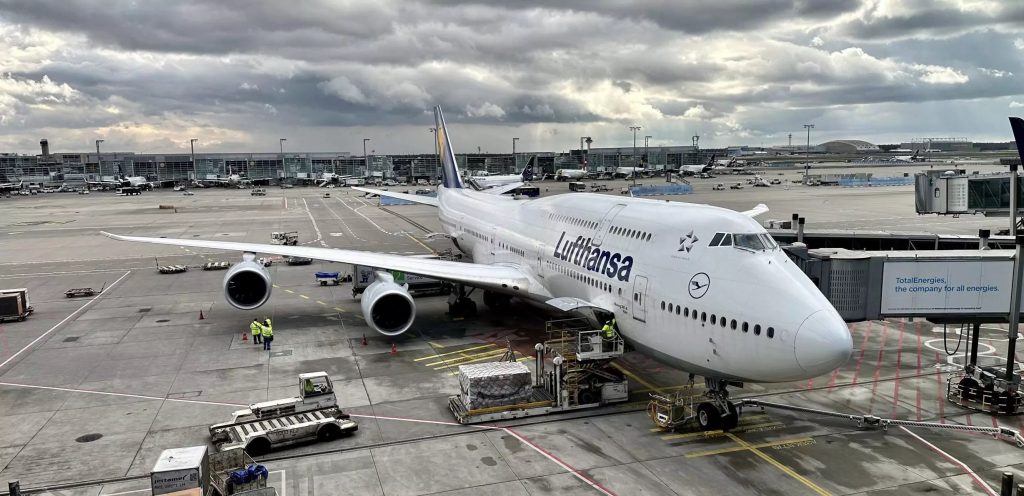
How to get to Munich – Flights from Ireland
Considering this is the third biggest city in Germany, it comes as no surprise that Munich is served by no less than 2 international air hubs: the Franz Josef Strauss Airport and the Memmingen Airport, located about 100km away from the city.
As such, if you’re traveling from Ireland, it is possible to fly directly to Franz Josef Strauss from Dublin (Aer Lingus and Lufthansa), Cork (Aer Lingus). On the other hand, there are flights to Memmingen from Dublin with Ryanair.
How many days do I need to visit Munich?
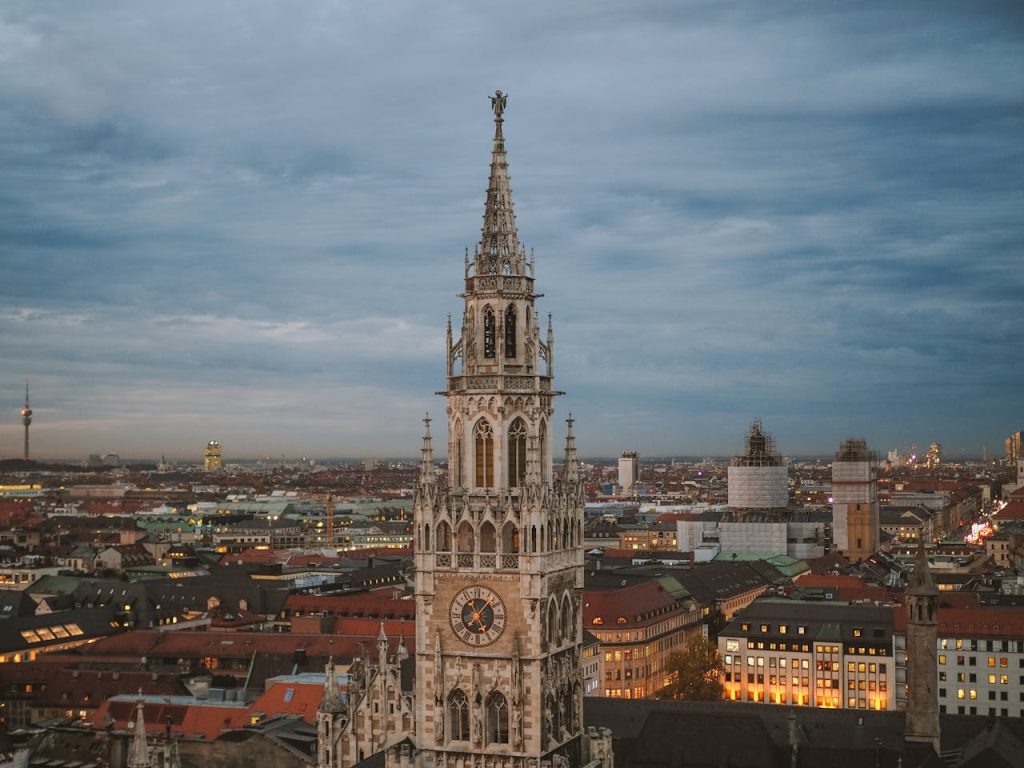
Despite being a big city with plenty to see and do, its compact historic center and well-developed transportation system help make Munich a great destination for a weekend getaway. While it would be better to have 3 full days to check out its main tourist attractions, we think it’s worth dedicating 2 days to the city and free up some precious time to go on a day trip to the world-famous Neuschwanstein Castle.
That being said, we recommend spending at least 3 days in Munich. However, if you want to extend your stay and explore other destinations across Bavaria, you may as well spend a whole week in the region, visiting the likes of Nuremberg, Rothenburg ob der Tauber, Wurzburg, Bamberg and Regensburg, as well as the extraordinary Bavarian Alps.
Munich 3-day travel guide – Best time to visit the city

As in most European countries, the best time to visit Munich is during Spring, Summer and early Fall, particularly between the months of May and October, when the chances of catching warm, sunny days are significantly higher. Evidently, Munich is synonymous with Oktoberfest, the legendary beer festival held annually in September and October (the exact dates keep changing), making this the ultimate time to visit the city. However, this popularity comes at a price, as flights and accommodations skyrocket to near-exorbitant levels during this period. Still, if budget isn’t a concern, experiencing the festival is well worth it.
Another fantastic time to visit the city is during the Christmas season, as Munich hosts one of the best Christmas markets in Europe.
Documents needed for your trip to Munich
Since Germany is part of the EU, Irish citizens only need to show a valid ID Card in order to be granted access to the country.
Munich 3-day travel guide – Withdrawals, banking fees and travel budget
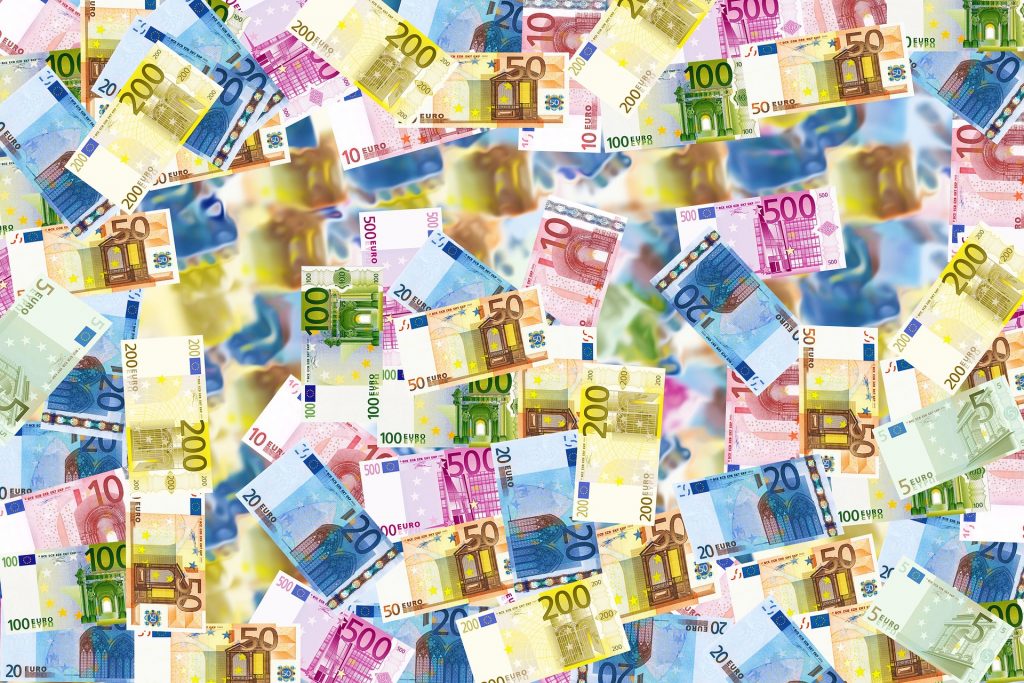
Since Germany is part of the Eurozone, just like Ireland, there is no currency exchange, with both nations using the Euro. As such, travelers are able to use the same credit/debit card that they utilize back at home without incurring in any fees. However, keep in mind some local banks or networks (such as the infamous Euronet ATM’s) may charge you a flat fee per withdrawal upon detecting that you’re using a foreign card.
Nevertheless, and so that you can get a tighter grip on your travel budget and things don’t slide out of control, we always recommend using Revolut. Although in Italy you won’t be able to take advantage of the card’s most redeeming quality – to allow you to withdraw foreign currency without any exchange fees – this is still a pretty useful tool.
By using the bank’s online app, you will have immediate access to your balance, as well as all your expenses, allowing you to check in real time whether you’ve been charged any fees for your withdrawals or not. Besides, you may just load your card with the exact daily amount you want to spend on your trip, helping you to avoid overspending and going over your budget. Plus, if you find yourself in a situation where your card got lost or stolen, the only money you stand to lose is amount you had loaded your card with. Sign up for Revolut for free >> to get 3 months of Premium.
Munich 3-day travel guide – Common scams and frauds

Since we’re talking about one of the most important nations in the EU, Germany can be considered a pretty safe tourist destination. In fact, Munich actually stands out as one of the safest big cities in the country! Although you may frequently hear otherwise, perceptions don’t really match the official data, as the Bavarian capital has pretty low crime rates and no discernable areas visitors should avoid.
However, and much like you would do in any other big city, using your common-sense is key. That means no taxis whose drivers refuse to start the meter, no accepting help from strangers when you’re using an ATM or trying to buy metro tickets and always keeping an eye out for your stuff when you’re walking through busy areas (especially around train stations). To sum up: don’t do anything you wouldn’t feel comfortable doing in any other city!
Where to sleep in Munich – Hotels and Accommodation

If you’re looking out for a place to stay on our Munich 3-day travel guide then we got your covered!
Unfortunately, Munich is far from a what can be considered a budget-friendly destination. Especially when it comes to food and accommodation, it is quite difficult to find options that go easy on the wallet. Plus, the few that still exist require staying quite far away from the city center. On the other hand, Germany boasts some of the higher hotel standards in Europe, so at the very least you are granted a decent level of cleanliness and comfort no matter how cheap your hotel room is!
That being said, here are a few hotel options which have passed our value-for-money test:
- Hostel – Euro Youth Hotel Munich
- € – ibis München City Süd
- €€ – Holiday Inn Munich City Centre by IHG
- €€€ – Residence Inn by Marriott Munich Ostbahnhof
- €€€€ – Hotel München Palace
Munich 3-Day Travel Guide – Transportation between the airports and the city

From Franz Josef Strauss Airport to Munich city center
Located more than 30 km apart, the best way to travel between Franz Josef Strauss Airport and the city center is by using lines S1 and S8 of the S-Bahn, the local suburban train system. The station is located inside the airport, so passengers just need to follow the signs. Because they serve the airport, these specific lines run 24/7, with a new train leaving every 10 minutes (one every 20 minutes for each line). Regardless of which train you take, both lines run through the city center – one coming from the east, the other from the west – so you can choose whatever station is most convenient to you. To get to the Central Station (Hauptbahnhof), it will take about 40 minutes. As for tickets, you can buy them from the automatic machines for €11,60.
On the other hand, you may also rely on the Lufthansa Express Bus, traveling between the airport and Hauptbahnhof. Once again, just follow the signage to find the bus stop. This service operates uninterruptedly in 20-minute intervals, every single day of the year! Expect the journey to take at least 45 minutes, depending on traffic conditions. Tickets cost €12,00 if purchased online from the company’s official website (link shared above), or €13,00 if you prefer to pay the driver directly. If you book a round-trip, it will come to a total of €19,30.
From Memmingen Airport to Munich city center
On the other hand, if you’re flying with Ryanair, chances are you’ll end up landing in Memmingen. Located 115 km away from Munich city center, the best way to get there from Memmingen Airport is to take the bus, with companies such as Allgäu Airport Express or Flixbus operating this route. Regardless of which carrier you choose, your final destination will always be the Hauptbahnhof, with the trip taking about 1h20. These services are available from 06h15 to 22h15, leaving every 30 minutes to 2 hours. You can buy your ticket online from any of these websites for around €9,90-€11,00.
Another great option would be to combine a local bus line with the train. Luckily, you don’t have to plan both trips separately, as you can buy a single ticket for both transports through DB (German Railways). Just make sure to type in “Memmingen Allgäu Airport” as either your origin or destination, and the total price will automatically include the bus fare between the airport and the Memmingen Railway Station, where you’ll change to a train heading to Munich Hauptbahnhof. In total, the trip might take around 90 minutes (20 for the bus trip + 10 waiting time for the train + 60 for the train journey). This service runs from 04h50 to 23h10 and leaves every hour. Tickets range from €30,00 to €40,00 and can be purchased through the company’s website or on the automatic machines at the airport.
Munich 3-Day Travel Guide – Public transportation

In proper German fashion, Munich boasts a public transportation system that runs like clock-work: clean, efficient and always on time! Composed of the metro (U-Bahn), suburban trains (S-Bahn), trams and buses, every single mode of transportation is integrated into the same network, meaning you can use the same tickets and even the same platforms (for the trains and the metro).
That being said, and if you really need to rely on public transportation, you’ll most likely end up using the metro, so it’s worth having a little overview of how to navigate it.
Munich Metro – Maps, Tickets and Fares for the U-Bahn

Made up of around 100 stations spread across 8 different lines, the metro system in Munich – along with the suburban train (S-Bahn) – is essential to the city’s urban mobility. In fact, if you look at the network map, both modes of transport share a lot of the same stations and are practically indistinguishable. Together, they reach pretty much all of the city’s most important suburbs, as well the central districts, making it easier for visitors and locals alike to travel across tourist attractions and business districts. Plus, the system is integrated into Google Maps, meaning the platform will provide you with real-time information on which line to take and where to catch it to reach your destination.
As for running times, the metro operates every day between 04h15 and 01h00 (up to 02h00 on Friday and Saturday nights), with waiting times ranging from 5 to 10 minutes.
Moving on to tickets, fares will depend on the number of zones you cross throughout your journey. However, as a tourist, you probably won’t get out of “Zone M”, which encompasses the entire city center and the neighboring districts. In that case, a single trip costs €4,10, allowing you to do as many transfers as you need within 2 hours (so as long as you don’t leave Zone M). However, if your journey goes through 4 stops or less, you may get a Short Trip Ticket for €2,00. Also, keep in mind all tickets should be validated upon boarding, although you can save yourself the hassle and choose a pre-validated ticket if you get yours from an automatic machine (it costs the same). Alternatively, you can buy a digital ticket from the MVV app.
Furthermore, you can also purchase a 10-trip strip card. However, this one doesn’t follow the usual 1 strip = 1 ticket rule commonly found in other cities that also sell multiple journey carnets. For example, if you stick to Zone M, traveling within this area requires you to use 2 strips (1 strip for children between 6 and 14). Currently, the strip card costs €17,80; or €9,80 for passengers under 21.
Finally, if you plan on using public transportation frequently, it’s worth looking into the daily options available:
- 1-Day Ticket: €9,70
- 1-Day Group Ticket (shared by up to 5 people): €18,70
- 1-Day Bavaria Ticket (shared by up to 5 people, valid in the entire state): €32,00
Munich 3-day Travel Guide – Free walking tours

While in Munich, you have the option to explore the city with a free walking tour. These tours, led by local guides or tour companies, offer guided visits to the historic center, sharing intriguing stories about each place and providing valuable cultural context. Even though these tours are technically free, it’s customary to show appreciation for the guide’s efforts by leaving a tip at the end. In Munich, a reasonable minimum tip would be around €8,00.
That being said, here are a few companies that run free walking tours in Munich:
Munich 3-day Travel Guide – Hidden Treasures
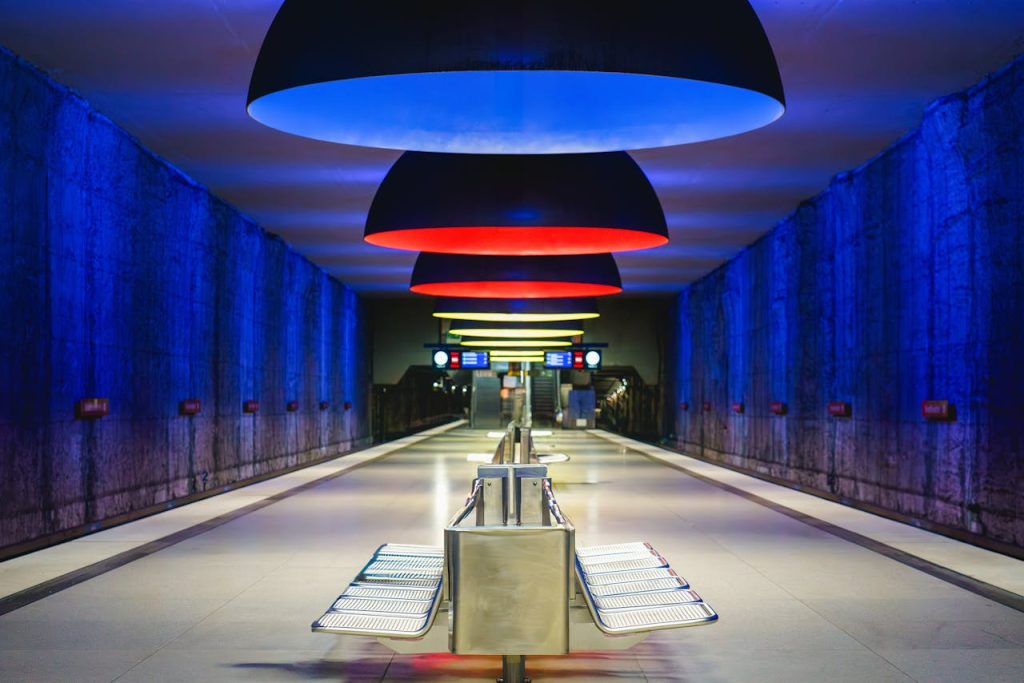
With 3 days in Munich, and although there is definitely plenty to see, you will have enough time to at least cover the main highlights without having to rush too much, meaning you can add a few off-the-beaten-path sites to your travel plans (even with a day trip to Neuschwanstein Castle)
That being said, and because we believe a good traveler must always be able to explore beyond the obvious, we wanted to add a few more obscure places to your list of things to see and do in Munich in 3 days:
Botanical Garden Munich-Nymphenburg: Located right next to the gardens of Nymphenburg Palace, this botanical space is often overshadowed by its more famous neighbor. A mistake worth correcting, as the park boasts an impressive collection of over 19.000 plant species from across the globe.
Allianz Arena: A place that is far from a hidden gem for football fans, this is one of Europe’s most iconic stadiums and the home of powerhouses Bayern Munich. While tickets for matches can be hard to come by, at least you can take a tour for €25,00.
Tiergarten: Home to the city’s zoo, this is yet another example of the outstanding plethora of urban parks visitors can find in Munich. Unfortunately, as it’s further away from the Old Town than its counterparts of Olympiapark or the Englischer Garten, Tiergarten gets a lot less tourism.
Asamkirche: With so many historic churches in Altstadt, skipping a few it’s a pretty tempting decision. However, be warned that this should not be one of them! Designed in a style that stands out from the rest of the city’s worshipping places, this architectural masterpiece is adorned with frescoes, gilded details and intricate stucco work.
Westfriedhof Station: While the metro system in Munich may not rival the grandeur of those in Moscow or Stockholm, this station is quite the impressive exception. With its enormous lamps shedding different light colors, this otherwise ordinary stop turns into an impromptu art installation.
Munich 3-Day Travel Guide – What to See and Do in 72 Hours
The perfect destination for a longer weekend getaway, with a full 72 hours you’ll be able to discover the very best Munich has to offer, including a day trip to the legendary Neuschwanstein Castle! Be that as it may, and when it comes to the city proper, you’ll have time to explore the Altstadt and its seemingly endless collection of churches, pedestrian squares (including Marienplatz), street shops and city palaces. Outside the Old Town, take a walk along the enchanting Englischer Garten, regarded as one of the best city parks in the world, go on a tour of Nymphenburg Palace, check out a couple of museums at Kunstreal and witness the brand’s innovative and technological legacy at BMW Welt. It may sound like a lot, but it’s totally worth it!
Without further ado, here’s what to see and do in Munich in 3 days:
Munich 3-Day Travel Guide: Day 1 – Altstadt

Welcome to Munich – the most quintessentially German city! The birthplace of a big part of the culture, architecture and landscapes most often associated with Germany, the capital of the Free State of Bavaria is a vibrant city brimming with things to see and do. Naturally, your first day will be dedicated to Altstadt, the Old Town of Munich. In fact, if you take a quick look at a city map, one can easily note where the medieval walls used to stand before being dismantled, marking the limits of the Old Town. While the walls may be gone, the classic architecture is still there, even if some of the buildings were originally destroyed (or badly damaged) in WWII bombings and meticulously reconstructed in the same style. That being said, there’s no better place to start than at Marienplatz, the city’s central square and its most iconic landmark. Once home to main marketplace – now relocated to Viktualienmarkt – this impressive plaza features the striking Neues Rathaus, which houses the city’s Town Hall. Probably the city’s most important (and striking) building, you can climb its tower for breathtaking views of the Old Town (€7,00) or visit its popular Juristische Bibliothek (€12,00). Other highlights in the square include the Altes Rathaus, the ornate Fischbrunnen fountain and the Glockenspiel, a mechanical clock featuring dancing figures that reenact famous moments from the history of Munich. For the latter, the clock “dances” daily at 11h00 and noon.

Near Marienplatz, we recommend checking out Asamkirche. With so many historic churches in Altstadt, skipping a few it’s a pretty tempting decision. However, be warned that this should not be one of them! Designed in a style that stands out from the rest of the city’s worshipping places, this architectural masterpiece is adorned with frescoes, gilded details and intricate stucco work. Other must-see churches in the Old Town include Peterskirche, Michaelskirche and Frauenkirche, officially the city’s main cathedral. You may also climb its tower and take in the views (€7,50). Now that we’ve covered the churches, let’s make some room for the city palaces! Given the history of Munich as the seat of dukes and kings, it’s no surprise visitors can find several different palaces here. Within the Altstadt, the definite highlight is the Munich Residence, an expansive complex of buildings, gardens and courtyards home to many museums and monuments. While you’re there, you can visit the Residence Museum (€10,00), the Treasury (€10,00, or €15,00 if combined with the museum) or the spectacular Cuvilliés Theatre (€5,00), a former private royal opera house. If you want to see all of these sites, you can buy a combined ticket for €20,00. Outside, don’t miss a walk through the Hofgarten, the palace’s beautiful garden. To cap off your day on a high note, spend a few hours wandering through the Englischer Garten, considered the largest park in Germany and one of the best in Europe. Spanning 370 hectares of perfectly crafted landscapes, artificial lakes, winding streams, oriental gardens and even museums, this is a must-visit when in Munich!

First day wrap-up:
- Asamkirche
- Peterskirche
- Viktualienmarkt
- Marienplatz
- Neues Rathaus
- Altes Rathaus
- Fischbrunnen
- Glockenspiel
- Frauenkirche
- Michaelskirche
- Munich Residence
- Cuvilliés Theater
- Hofgarten
- Englischer Garten
Where to eat in Munich – Best restaurants in Altstadt
- Augustiner Klosterwirt (German traditional)
- Andy’s Krablergarten (German traditional)
- Augustiner Stammhaus (German traditional)
- Hofbräuhaus München (traditional beerhall)
- Sababa (Lebanese)
- Max Beef Noodles (Chinese)
- Hansik (Korean)
- Sesam Falafel (falafel)
- Muenchner Suppenkueche (soups)
- Viktualienmarkt (market)
Munich 3-Day Travel Guide: Day 2 – Nymphenburg Palace, Olympiapark and BMW

Since your final day is reserved for an extremely popular day trip, this will actually be your last opportunity to explore Munich proper. And since you’ve had the chance to visit the Old Town, it’s time to venture beyond the Altstadt and discover other parts of the city. You won’t stray too far to kick things off, stopping at the neighboring quarter of Maxvorstadt, an area of the city known for the Kunstareal District. Centered around Konigsplatz, this is actually Munich’s arts district – a place packed with neoclassical architecture and some of the city’s most prestigious museums. While you won’t have time to visit them all, it’s worth taking a stroll through this cultural hub and picking at least one museum to explore. If you’re unsure which to choose, there’s no going wrong with Alte Pinakothek (€9,00), one of the oldest art galleries in the world. From here, you’ll head west to Nymphenburg Palace, a former royal summer residence located beside a picturesque canal. While you can tour the interiors (€10,00), much of its charm actually lies in its expansive baroque gardens and waterways (€6,00 to enter the park). If you’re lucky, you might even get the typical postcard-picture with the palace’s swans posing in front of the main façade! Located right next to the gardens of Nymphenburg Palace, make sure to see the Botanical Garden Munich-Nymphenburg (€5,50). Often overshadowed by its more famous neighbor, it boasts an impressive collection of over 19.000 plant species from across the globe.

Next up, you’ll take the metro (U-Bahn) to your next destination. However, we suggest making a quick detour to Westfriedhof Station. While the metro system in Munich may not rival the grandeur of those in Moscow or Stockholm, this station is quite the impressive exception. With its enormous lamps shedding different light colors, this otherwise ordinary stop turns into an impromptu art installation. After taking a few snaps of this hidden gem, you’ll emerge from the underground at Olympiapark, the vast green space that hosted the 1972 Olympic Games. Perfect for a relaxing walk, this park is also home to the Olympic Stadium and the Olympic Tower, which you may also climb for stunning panoramic views of the city (€13,00). At the edge of the park, car enthusiasts will want to visit BMW Welt, a sort of exhibition hall showcasing every single model ever produced by the legendary Bavarian automaker. Astonishingly, you can even enter the factory and catch a glimpse of the manufacturing process. Oh, and all of this is completely free of charge – no ticket required! To wrap up the day, and though this is yet another niche activity, consider visiting the famous Allianz Arena. A place that is far from off-the-beaten-path for football fans, this is one of Europe’s most iconic stadiums and the home of powerhouses Bayern Munich. While tickets for matches can be hard to come by, at least you can take a tour for €25,00.

Second day wrap-up:
- Kunstareal District
- Alte Pinakothek
- Nymphenburg Palace
- Botanical Garden Munich-Nymphenburg
- Westfriedhof Station
- Olympiapark
- BMW Welt
- Allianz Arena
Where to eat in Munich – Best restaurants in Schwabing-West and Maxvorstadt
- Gaststätte Scheidegger (German traditional)
- Steinheil 16 (German traditional)
- Türkenhof (German traditional)
- Binh Minh (Vietnamese)
- Song’s Kitchen Restaurant (Taiwanese)
- Condesa (Mexican)
- Maharani im Stiglmaierplatz (Indian)
- Royal Cookhouse Pizzeria (Georgian + Pizza)
- Ruff’s Burger & BBQ Schwabing (hamburgers)
- Pancake (pancakes)
Munich 3-Day Travel Guide: Day 3 – Day trip to Neuschwanstein Castle

While we understand you may feel like you had to rush your experience in Munich, in the end you’ll realize it was all for a good cause! After all, the final day of your adventure includes a day trip to the incredible Neuschwanstein Castle, the site that allegedly inspired Walt Disney’s trademark fairytale castle! Whether true or not, it’s impossible not to notice the similarities! Located right next to the Austrian border, 120 km away from Munich, Neuschwanstein is also the most popular excursion from the Bavarian capital – and it’s oh-so-easy to see why! From the castle’s extraordinary architecture, marked by imposing stone façades and towering spires, to the breathtaking natural scenery at the foot of the Alps, this is one of those increasingly rare destinations that actually live up to the photos! In addition to exploring the entire complex and taking a tour of the interiors (€21,00 for the guided visit), it is absolutely mandatory to walk to the Marienbrucke to capture Neuschwanstein’s most iconic image (yeah, you know exactly what we’re talking about).
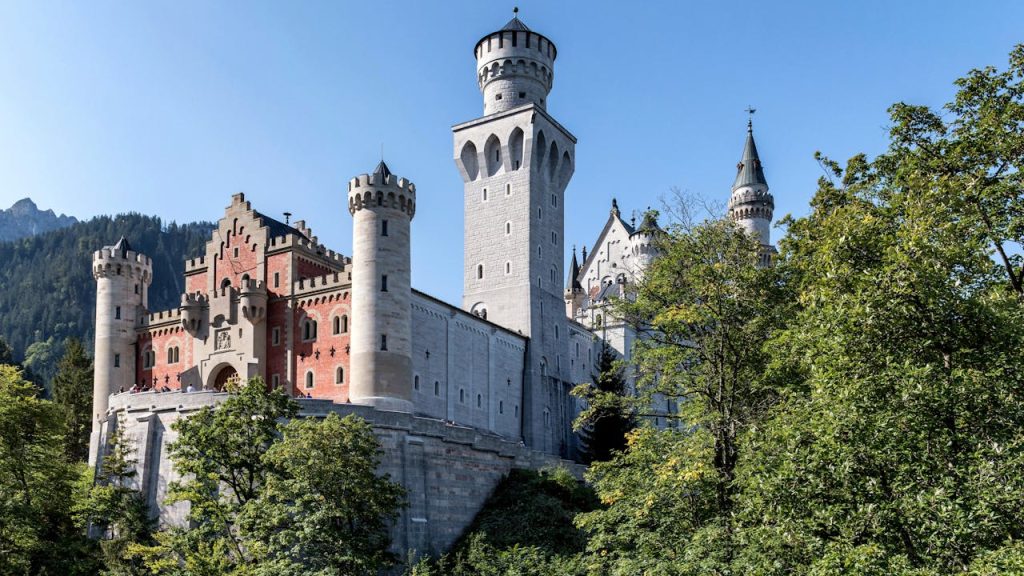
So, how can you get to Neuschwanstein from Munich? Fortunately, given the destination’s popularity, there’s no shortage of transportation options! One alternative is to take a train to Fussen (2h00; €29,00 each way), located 4 km away from the palace. From there, you can take the local bus 78 right outside the train station (here) or simply walk that distance. Just keep in mind that the closest bus stop to the castle is still a 30-minute stroll from the main entrance. Luckily, there is a shuttle service organized by local authorities to transport visitors between these two locations (€3,50 round-trip). Alternatively, if you’re not comfortable navigating the German railway system on your own, you can always join an organized tour from Munich. Regardless of your choice, rest assured this is going to be an unforgettable day, as well as the perfect farewell gift before flying back home.
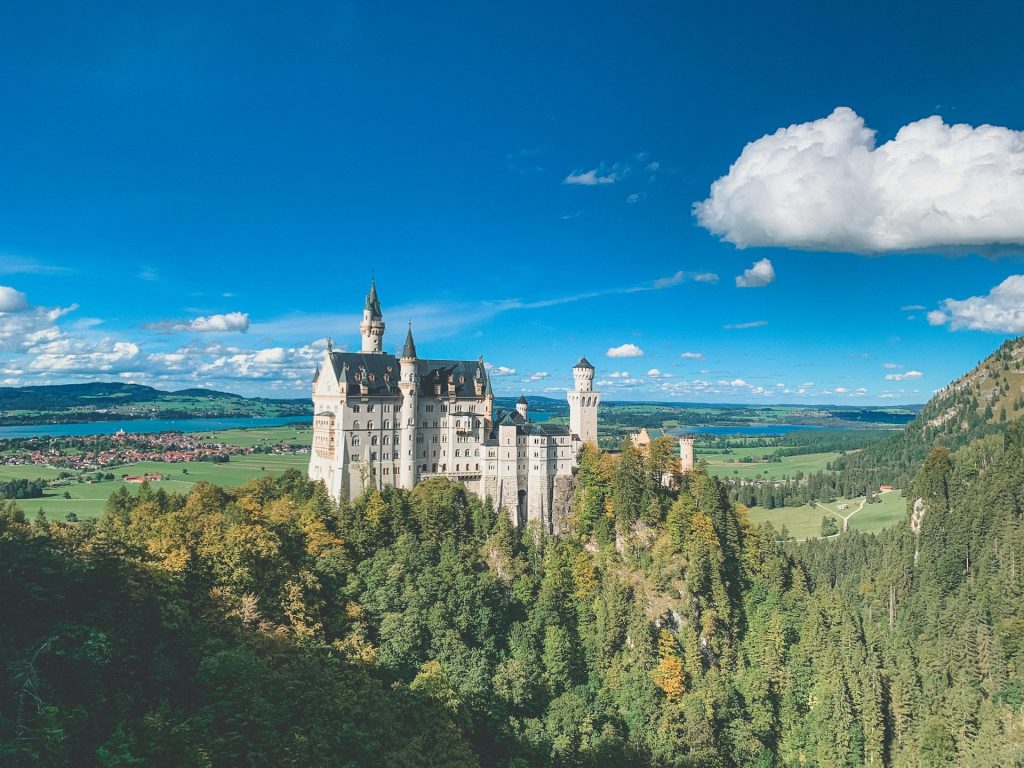
Third day wrap-up:
- Neuschwanstein Castle
Got more than 3 days in Munich? Then you might want to check out the best day trips from the city

Nuremberg: Considered the second-largest city in Bavaria, Nuremberg offers a pretty good blend of history and architecture. While its medieval Old Town and imposing castle look great in photos, its outskirts reveal the city’s darker past as a stronghold of the Nazi Party. After all, it was here that Hitler insisted to host his infamous annual rallies at the Reichsparteitagsgelände.
Dachau: Forever synonymous with the WWII concentration camp – probably the most notorious after Auschwitz-Birkenau – today, visitors can tour the site and learn more about the horrific atrocities committed by the Nazis and the brutal conditions endured by prisoners.
Bamberg: Possibly the prettiest German town you’ve never heard of! Set between two tributaries of the Regnitz River, Bamberg’s historic core is absolutely stunning, boasting picturesque half-timbered houses and beautiful medieval architecture.
Rothenburg ob der Tauber: If you’ve done any kind of Google search about German tourist destinations, I’m pretty sure you’ve seen pictures of this place before. With its well-preserved medieval walls, ancient colorful buildings and charming cobblestone streets, Rothenburg is the quintessential European fairytale town. If time allows, you may even follow the Romantic Road and visit the enchanting towns of Dinkelsbuhl and Nordlingen.
Regensburg: Nestled on the banks of the legendary Danube, Regensburg is one of the best-preserved medieval cities in Europe. Plus, due to its ancient history, majestic churches, pedestrian squares and hidden terraces, the Old Town has been recognized by UNESCO as a World Heritage Site.
Salzburg: Finally, for those looking to venture beyond the border and visit Austria, Salzburg stands out as a great day trip option. While the city is mostly famous for its music – thanks to its status as Mozart’s birthplace and as the filming location for “The Sound of Music” – visitors may also explore its grand castle, stroll along the city center and enjoy the breathtaking Alpine scenery.
Traveling soon? Get your Holafly eSIM with a 5% discount for unlimited internet access in any destination. No more worrying about roaming charges or finding local SIM cards. Enjoy unlimited data and stay connected with ease. Order your Holafly eSIM now »
Heymondo offers a wide range of travel assistance insurance policies. They combine the best quality, service and price with various levels of coverage, so you’re covered on your weekend getaways and long trips. Click here to get 5% off on your travel insurance »









